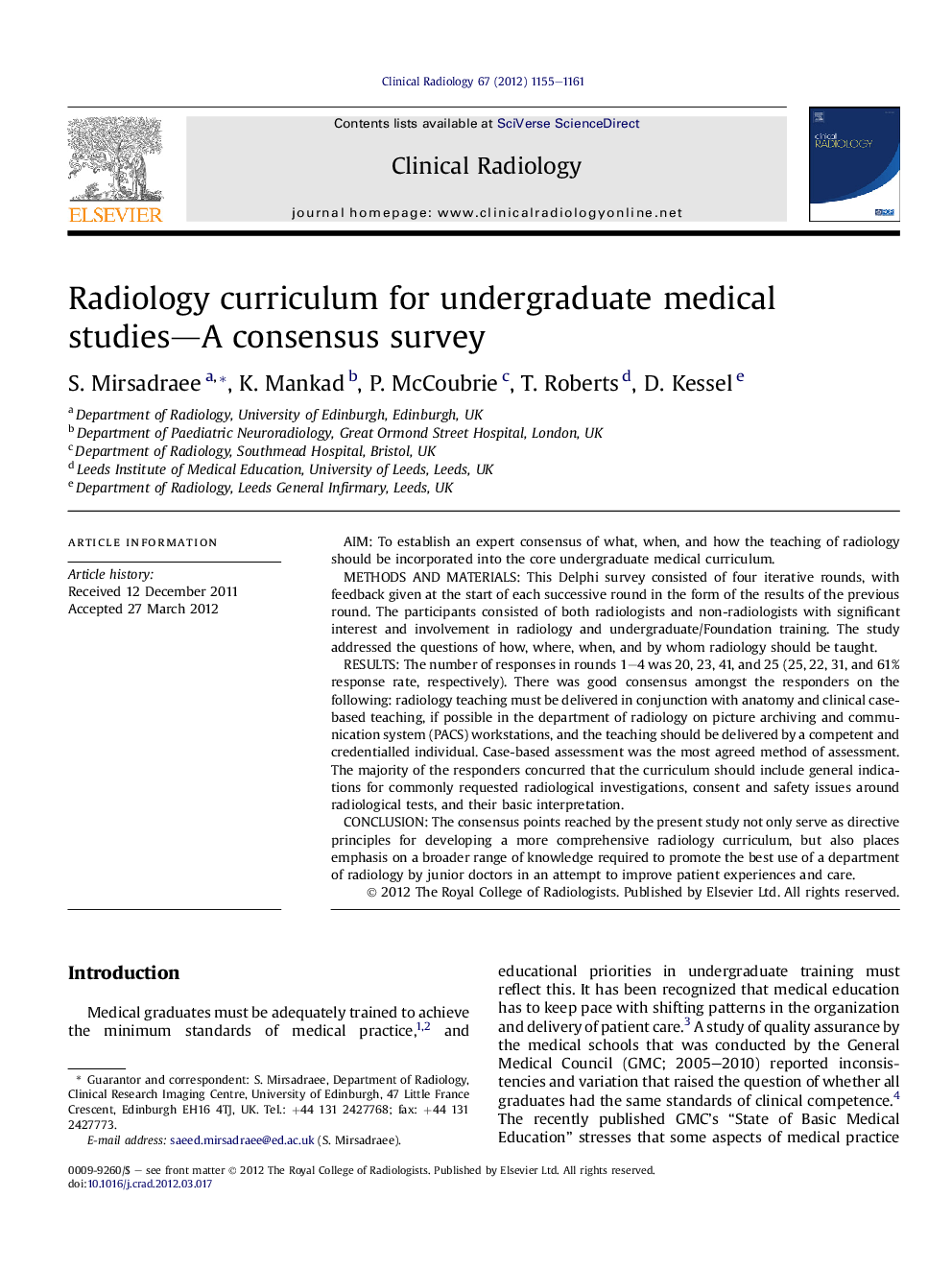| Article ID | Journal | Published Year | Pages | File Type |
|---|---|---|---|---|
| 3982866 | Clinical Radiology | 2012 | 7 Pages |
AimTo establish an expert consensus of what, when, and how the teaching of radiology should be incorporated into the core undergraduate medical curriculum.Methods and materialsThis Delphi survey consisted of four iterative rounds, with feedback given at the start of each successive round in the form of the results of the previous round. The participants consisted of both radiologists and non-radiologists with significant interest and involvement in radiology and undergraduate/Foundation training. The study addressed the questions of how, where, when, and by whom radiology should be taught.ResultsThe number of responses in rounds 1–4 was 20, 23, 41, and 25 (25, 22, 31, and 61% response rate, respectively). There was good consensus amongst the responders on the following: radiology teaching must be delivered in conjunction with anatomy and clinical case-based teaching, if possible in the department of radiology on picture archiving and communication system (PACS) workstations, and the teaching should be delivered by a competent and credentialled individual. Case-based assessment was the most agreed method of assessment. The majority of the responders concurred that the curriculum should include general indications for commonly requested radiological investigations, consent and safety issues around radiological tests, and their basic interpretation.ConclusionThe consensus points reached by the present study not only serve as directive principles for developing a more comprehensive radiology curriculum, but also places emphasis on a broader range of knowledge required to promote the best use of a department of radiology by junior doctors in an attempt to improve patient experiences and care.
